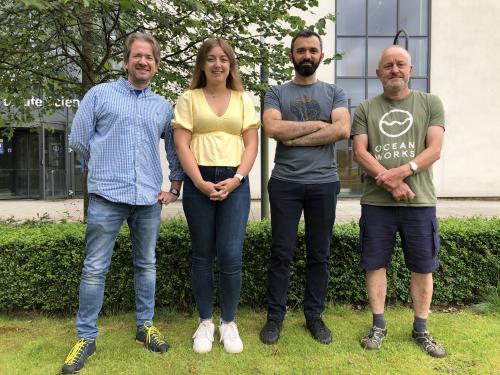
Parkinson’s disease (PD) is a progressive neurodegenerative disorder that is characterised by the loss of midbrain dopaminergic neurons. The physiological and molecular mechanisms leading to this neuronal loss are currently unclear; however, mitochondrial and lysosomal dysfunction seem to play a central disease role. Mitophagy, the lysosomal turnover of mitochondria, is a quality control mechanism that links both these organelles and is used by cells to recycle old, damaged and dysfunctional mitochondria. A failure of this pathway is very detrimental to cell health. Given this, and to gain a potential insight into PD pathology, the Ganley Lab teamed up with GSK, who are one of the pharmaceutical company members of the Division of Signal Transduction Therapy (DSTT) collaboration with the University of Dundee. The team used cutting-edge techniques to look at mitophagy in the brains of mice harbouring the most common genetic mutation found PD: LRRK2 G2019S.
Using a fluorescent mitophagy reporter, Francois Singh - the first author of the study, found that the PD-causing LRRK2 mutation impairs mitophagy in dopaminergic neurons. In line with the LRRK2 G2019S variant being associated with Parkinson’s disease risk, this effect was specific as in another neuronal type (Purkinje neurons) mitophagy appeared to function normally. This could help explain the cellular mechanism that drives selective loss of dopaminergic neurons, which in turn leads to the major clinical symptoms such as tremor, muscle stiffness and slow movement that characterise Parkinson’s disease.
As LRRK2 is a protein kinase and the G2019S mutation results in its increased activity, it has emerged as an attractive candidate PD therapeutic target. GSK provided a highly potent and selective LRRK2 inhibitor suitable for Francois and colleagues to use in their preclinical studies. Very importantly, this compound was able to rescue the mitophagy defect in the mice. So, not only does this study show that the most common PD-causing LRRK2 mutation disrupts mitophagy, in clinically-relevant cells in vivo, but also that this can be rescued by treatment with a novel LRRK2 inhibitor. This study, published in eLife, will hopefully provide much needed validation for mitophagy and LRRK2 in Parkinson’s Disease, which may provide new research directions for the treatment of this devastating disease.
Ian Ganley, Principal Investigator: “We are really excited about this work. Not only have we discovered new biology, but we have also shown that a specific compound can rescue a mitochondrial defect related to Parkinson’s disease. These findings highlight the great benefit of academic-industrial collaborations that will hopefully accelerate the promise of bench-to-bedside translational research”.
The research, published in eLife, can be read here.

